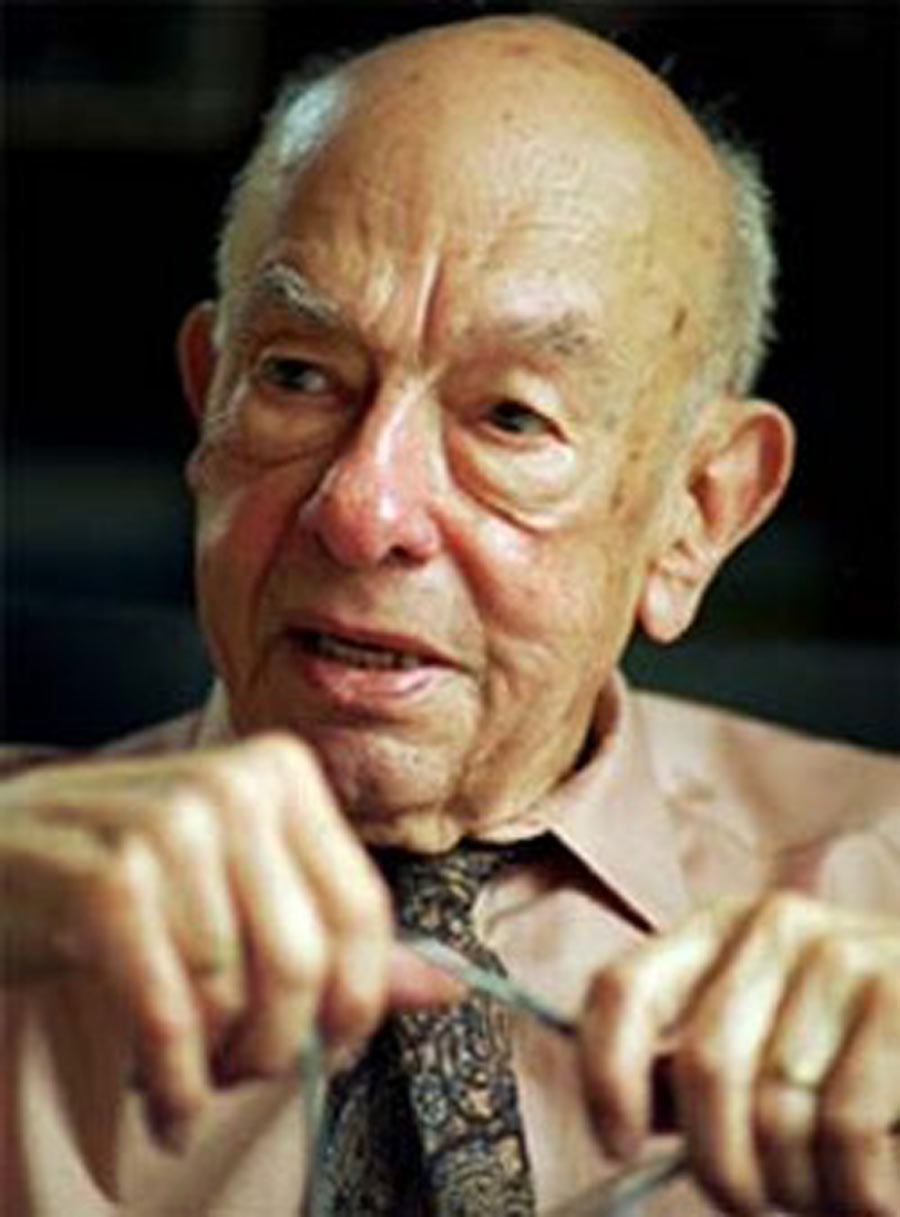The views expressed in our content reflect individual perspectives and do not represent the authoritative views of the Baha'i Faith.
How do we know the truth?
In order to make sense out of experience, we make certain assumptions about reality. If we make these assumptions unconsciously, we often refer to them as “common sense.” We know, for example, that getting thumped by a baseball will hurt if we’ve been hit by flying objects before.
But we may know this without being able to cite a single principle of acceleration or velocity that “proves” it will hurt. Much of our knowledge about our world—physical, emotional, or intellectual—fits into this category. We do not clamor for scientific proof that our children or mates love us, nor do we offer scientific proof that we love them. We deem their behavior toward us and our “feelings” for them to be sufficient evidence of love.
This might raise the question: is love real? Is belief in love rational? (That’s another discussion.)

W. V. Quine
Logician W. V. Quine wrote: “science is common sense which has become self-conscious.” In other words, when our assumptions are organized consciously, we have the beginnings of science. As we examine and test the logical relationships between our assumptions and their consequences we’re led to a well-organized “body of knowledge” which describes a model of reality. The collection of statements which make up this body of knowledge are the statements of science, which will be continually revised in the light of new experiences, new assumptions, and new logical relationships.
So, to put it simply: science is organized knowledge. The conscious, explicit acquisition and organization of knowledge is what makes it scientific. To illustrate the point, let’s look again at the statement: “The cat is black.” This is:
- Common sense knowledge.
- Arrived at unconsciously.
- Directly observable.
Science asks why the cat’s fur is what we call “black.” A statement about that reality might look like this: “The cat’s fur absorbs all frequencies of visible light.” This is:
- Scientific knowledge.
- Arrived at consciously.
- Not directly observable, but requires experimentation, reason, and knowledge about other mechanisms.
Science is not just a matter of discovering true statements. We all know a myriad, trivial, true statements: black cat is black, fire burns, baseballs are hard. Proof, in scientific terms, means the total process by which we render a statement acceptable by the pragmatic criterion: “Does it work the way it says it will?”
The Baha’i teachings say that faith ought to be equally pragmatic:
Scientific knowledge is the highest attainment upon the human plane, for science is the discoverer of realities. It is of two kinds: material and spiritual. Material science is the investigation of natural phenomena; divine science is the discovery and realization of spiritual verities. The world of humanity must acquire both. A bird has two wings; it cannot fly with one. Material and spiritual science are the two wings of human uplift and attainment. Both are necessary… – Abdu’l-Baha, The Promulgation of Universal Peace, p. 138.
Here, Abdu’l-Baha suggests that the application of observation and reason is pertinent to both the investigation of natural phenomena and the discovery and realization of spiritual truths.
The scientific method is the systematic, organized, directed, and conscious use of our various mental faculties in an effort to arrive at a coherent model of whatever phenomenon is being investigated. – William S. Hatcher, Science of Religion, p. 12.
Once we accept a concept or principle as true, our emotions begin to organize themselves around it. We come to depend on it. The concept “ceases to be a mere intellectual hypothesis or assumption. It becomes part of the way we live and expect things to behave.” – Ibid. p. 12
Let’s look at a principle of “divine science:” “Hatred does not cease by hatred; hatred ceases by love—this is an eternal commandment.” — Buddha, Sanskrit Dhammapada 1:5.
The Baha’i teachings offer a postulate to that principle: “A thought of hatred must be destroyed by a more powerful thought of love.” – Abdu’l-Baha, Paris Talks p. 29.
Abdu’l-Baha repeatedly proved that principle in the laboratory of his life by putting both principle and postulate into action. Let me give one example: While in the prison city of Akka, Palestine, Abdu’l-Baha undertook the care of a Muslim man who had a wasting disease. The man’s family and friends had abandoned him, but Abdu’l-Baha would not. The man hated Abdu’l-Baha. He considered him an apostate—a heretic. He spat at him, cursed him and vilified him all the while Abdu’l-Baha was tending to his needs. This went on for 24 years; it took that long for the Muslim gentleman to finally learn to love Abdu’l-Baha and to consider him a friend.
I’ve also done personal “experiments” with this tenet of faith—found in the scriptures of all revealed religion in some form—and discovered that, indeed, it works. It usually works in far less than 24 years. One of my best friends in college was someone who had been my worst enemy in high school, and the change occurred through non-random acts of kindness precipitated by my taking seriously Jesus’ instructions about how to treat my enemies.
I can now assume that these principles can be put into action and that, if put into action, they will work.
William S. Hatcher refers to this as “organizing our emotions around our assumptions:”
We need a good word to sum up this process of organizing our emotions around our assumptions, and religion has provided us with the word: faith. We can define an individual’s faith to be his total emotional and psychological orientation resulting from the body of assumptions about reality which he has made (consciously or unconsciously). – Science of Religion, p. 12.
Next: What is Faith, and How Do We Find It?
















Comments
Sign in or create an account
Continue with Googleor